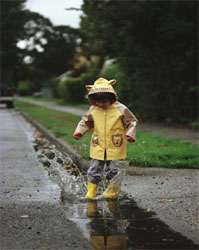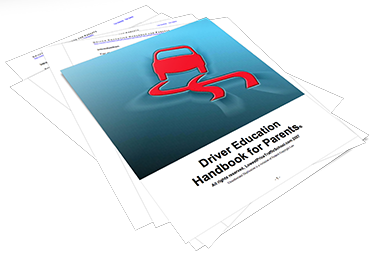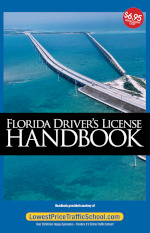Introduction
For most teenagers, learning to drive is an exciting and highly anticipated rite of passage that means greater independence lies ahead. For parents, teaching their teen to drive may be a time of mixed emotions. Parents often want their teens to have more independence, but they may also feel anxious about how their teens will fare behind the wheel of a car.
A plan of action may reduce the anxiety parents experience when faced with the prospect of teaching their teenagers to drive. Though every teenager and parent is unique, a standardized driver training plan can be customized to meet most families' needs. When customizing a driver-training plan, parents must consider their child's maturity level, particularly with regard to her or his decision-making ability and degree of dependability.
Parents should also consider is their own driving behaviors and patterns. Parents often display risky driving behaviors that will influence the habits of their new teen driver. Examples include:

- Eating or drinking
- Grooming (applying makeup or shaving)
- Talking on a cellular telephone
- Being distracted by a conversation with a passenger
- Neglecting to wear a safety belt on every trip
- Aggressive driving, such as speeding or fast, frequent lane changes
- Rolling through stop signs or running red lights
Exercise One: Teens copy many of their parents' driving behaviors. Parents want their teens to copy behaviors that make them safer drivers. It is important to remember that when your teen copies risky driving behaviors, she or he is doing so without the benefit of years of experience and highly-developed skills.
Consider your driving habits. Write down the driving behaviors and patterns that are risky. If you discovered that your teen was performing those behaviors, would you consider her or him a safe driver? If the answer is no, make a commitment to stop the behavior immediately.
Next, consider your driving habits and write down the driving behaviors and patterns that you want your teen to copy. Make a commitment to model those behaviors for your teen consistently.
Communication
Another important part of teaching teenagers to drive safely is communication. Parents should talk about responsible driving with their teens each time they ride together.
Exercise Two: On your next car trip with your teen, conduct a pre-trip vehicle inspection aloud. Use the following steps:
- As you approach the vehicle:
- look for items that obstruct the path of the vehicle
- notice the general condition of the vehicle
- look underneath the vehicle for leaks
- make sure lights and reflectors are clean
- visually inspect tires for low air pressure
- After you enter the vehicle:
- place the key in the ignition
- lock all doors
- ensure that the parking brake is on and that the gearshift lever is in park
- adjust the seat position so that knees are slightly bent and the upper body is a minimum of 10 inches away from the steering wheel
- position the head restraint directly behind the middle of the head
- fasten safety belt:
- adjust the safety belt to fit snugly across the lower hips
- make sure the shoulder strap of the safety belt crosses over the breastbone and rests across the collarbone; adjust the side pillar to improve the shoulder strap fit, if necessary
- adjust the steering wheel and steering column
- position inside and outside mirrors to maximize viewing range
- ensure that the inside windshield is clean; clean the windshield once per week to minimize glare
- When you start the vehicle:
- place the right foot on the brake pedal and start the vehicle
- check your oil, fuel and temperature gauges
- adjust the air conditioning/heating
- move the gearshift selector to drive or reverse and release the parking brake
- visually scan the area and check your mirrors to be sure it is safe to proceed
Exercise Three: Take another trip with your teen. Ask your teen to help you conduct the pre-trip vehicle inspection. As you drive, discuss the driving environment with your teen. Point out potential hazards and discuss methods of managing them. For example, if you see a small child, you might point out how quickly the child could run into your path. Discuss how to approach the child and potential avenues of escape if an emergency should occur.

This dialogue with your teen should include information about:
- how weather and traffic conditions affect driving
- the difference between city and highway driving
- when to pull out in traffic and factors that contribute to that decision
- handling situations that may be confusing to new drivers, such as yellow lights, four-way stops, and emergency vehicles
- any situation about which your teen has questions or concerns
Provide a running commentary every time you drive with your teen. Demonstrate the visual inspection process, point out potential hazards, and explain the decision-making process that you encounter. This will help to guide your teen in her or his decision-making skills.
Exercise Four: Show your insurance policy to your teen, visit your insurance company's web site together, or pay a joint visit to your insurance agent's office. Explain, or ask your agent to explain, the purpose of motor vehicle insurance. Define insurance terminology, such as bodily injury liability, comprehensive coverage, personal injury protection, and uninsured motorist coverage. Discuss the cost of insurance and how the cost of your insurance policy might increase or decrease. Ask your insurance agent whether a driver education course or good student discount is available. Find out how much your insurance premium will increase after a single accident or ticket. Ask your teen to commit to keeping her or his insurance rates as low as possible.
Exercise Five: Obtain a copy of your state's Driver's Handbook from the Department of Motor Vehicles. Review each section with your teen to make sure that she or he understands the information in the Handbook.
You may also want to enroll your teen in the DMV Exam Prep course at LowestPriceTrafficSchool.com, which:
- will save you time
- will save your teen the embarrassment of failing the exam
- will provide your teen with additional driver training
- has a money-back guarantee
Look for driving-related newspaper articles that you can share with your teen. Each article provides an opportunity for learning. The National Safety Commission provides subscriptions to the Safe Driving Teen Monthly Bulletin for a very modest fee. It's packed with valuable information that will provide continuing driver education to your teen after she or he becomes licensed. Teens are most susceptible to crashes when they have some driving experience and are feeling confident (perhaps overconfident) in their driving abilities. The Bulletin reminds them that they are not invincible.
You have probably noticed that you have completed several driver-training exercises with your teen, but she or he has not yet sat behind the wheel of the vehicle. A tremendous amount of preparation is required to teach teenagers to drive safely. And for many parents, driving is such an ingrained habit that they must refresh their knowledge about fundamental driving concepts. Since many states require parents to accompany their teen for a mandatory number of hours of behind-the-wheel instruction before the teen can receive a regular operator's license, your teen is dependant on you for proper training. This Handbook has been designed to assist you in accomplishing this goal. It includes the following:
- definition of a safe driver
- tips for helping your teen earn a learner's driver license or permit
- how to evaluate and monitor your teen's progress using our Teaching Checklist and Evaluation Report and Logbook of Driving Experience
- a Checklist Instructional Guide that explains how to describe and evaluate skills like pre-vehicles checks, parallel parking, and proper passing techniques
Enjoy the Handbook and good luck with driver training!




